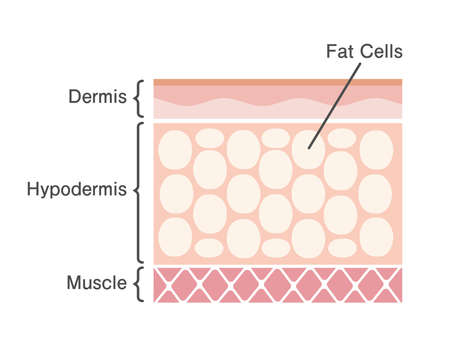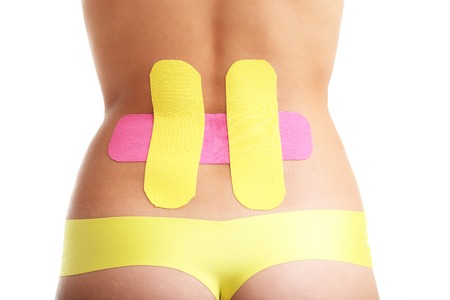What is Cellulite?
Cellulite is a completely natural and common skin condition that appears as dimpled or lumpy areas, typically on the thighs, hips, buttocks, and sometimes the abdomen. Despite its prevalence, there’s still plenty of confusion about what it actually is. In simple terms, cellulite forms when fat deposits push through the connective tissue beneath the skin. This process can affect anyone, regardless of age, gender, or body type, though it’s most frequently seen in women due to differences in fat distribution, muscle structure, and hormones.
In the UK, where lifestyle factors such as diet, physical activity, and even genetics play their part, cellulite is a concern that unites people from all walks of life—from busy London professionals to countryside dwellers alike. The table below highlights some key facts about cellulite in Britain:
| Fact | Details |
|---|---|
| Prevalence | Affects up to 90% of women and a significant number of men |
| Common Areas | Thighs, hips, buttocks, abdomen |
| Age Group | Seen in teens through late adulthood |
No matter your background or body shape, noticing cellulite is nothing to feel embarrassed about. It’s a perfectly normal part of our bodies landscape—and understanding it is the first step towards feeling confident in your own skin.
2. Common Causes of Cellulite
Cellulite is a complex concern influenced by several factors, many of which are particularly relevant here in the UK. Understanding these underlying causes can help us make more informed choices about prevention and treatment. Below, we explore the main contributors to cellulite as highlighted by British dermatology experts.
Genetics
Your family history plays a significant role in determining your likelihood of developing cellulite. If your mother or grandmother had noticeable dimpling, it’s more probable that you might experience it too. Certain genetic traits—such as skin structure, fat distribution, and metabolism—are inherited and cannot be altered through lifestyle alone.
Lifestyle Choices
Modern British lifestyles can sometimes inadvertently contribute to cellulite formation. Factors such as a sedentary routine (think long hours at the office desk or commuting on the Tube), poor hydration (those countless cups of tea can’t replace water!), and a diet high in processed foods or salt can all exacerbate the appearance of cellulite. Regular exercise and balanced nutrition rich in fresh fruits, vegetables, and whole grains are recommended by local health experts for supporting skin health.
Hormonal Influences
Hormonal fluctuations are another major factor—particularly oestrogen, which is prominent in women. Changes associated with puberty, pregnancy, menopause, and even contraceptive use can affect blood flow, collagen production, and fat storage beneath the skin. British GPs often note that hormonal cycles can directly correlate with changes in cellulite visibility.
Environmental Considerations in the UK
Our unique climate and environmental habits also play a part. The UK’s cooler weather often means less sun exposure, which can reduce vitamin D synthesis—a nutrient essential for healthy skin. Additionally, central heating during colder months can dehydrate the skin further. Awareness of these environmental elements helps us better manage their impact on our skin’s appearance.
Summary Table: Key Factors Contributing to Cellulite in the UK
| Factor | Description |
|---|---|
| Genetics | Inherited predisposition to fat distribution and skin structure |
| Lifestyle Choices | Sedentary habits, poor diet, insufficient hydration |
| Hormonal Influences | Oestrogen levels fluctuating during life stages |
| Environmental Factors | Low sun exposure, central heating drying out skin |
By recognising these root causes—with a special nod to our uniquely British context—we’re better equipped to choose treatments and routines that genuinely support smoother, healthier-looking skin.

3. Busting Cellulite Myths
Cellulite is a topic that often sparks spirited discussions across Britain, with myths and misunderstandings frequently featured in magazines, TV shows, and even friendly chats over a cuppa. Let’s set the record straight by debunking some of the most common misconceptions about cellulite found in British media and culture.
Common Cellulite Myths vs. The Facts
| Myth | The Reality |
|---|---|
| Only overweight people get cellulite | Cellulite can affect anyone, regardless of weight or body type. Genetics, hormones, and lifestyle all play a role. |
| Cellulite is caused by poor hygiene | This is completely false. Cleanliness does not impact whether you have cellulite—its mainly down to skin structure and fat distribution. |
| Men don’t get cellulite | While less common due to differences in skin structure and fat storage, men can also develop cellulite. |
| Expensive creams can erase cellulite | No topical cream has been clinically proven to completely remove cellulite. Some may temporarily improve appearance, but lasting results require holistic approaches. |
Why Do These Myths Persist?
The British press and advertising often present airbrushed images and quick-fix solutions, fuelling unrealistic expectations. It’s easy to see how these myths take root when celebrity culture showcases flawless legs or promises miracle cures from “must-have” products on the High Street.
A Fresh Perspective: Embracing Realness
Busting these myths is essential for a healthy self-image. Experts across the UK encourage embracing natural body diversity and recognising that cellulite is both normal and common—even among athletes and celebrities. Understanding the truth helps us make well-informed choices rather than chasing after ineffective fads.
4. Effective Cellulite Treatments in the UK
When it comes to tackling cellulite, British experts tend to favour a blend of clinical treatments and natural approaches, focusing on both efficacy and safety. Below is an honest review of the most trusted and popular options currently available in the UK.
Clinical Procedures Recommended by British Specialists
| Treatment | Description | Pros | Cons |
|---|---|---|---|
| Cellulite Reduction Laser Therapy | Uses targeted laser energy to break down fatty tissue beneath the skin. | Noticeable improvement after a few sessions; minimal downtime. | May be costly; results vary by individual. |
| Radiofrequency (RF) Treatments | Employs radio waves to heat and tighten skin while reducing fat cells. | Non-invasive; can improve skin texture. | Mild discomfort during procedure; multiple sessions needed. |
| Acoustic Wave Therapy | Pulses of sound waves stimulate collagen production and improve circulation. | No chemicals or injections involved; favoured for subtle, natural results. | Gradual results; best for mild to moderate cellulite. |
| Lymphatic Drainage Massage | A specialist massage technique that encourages drainage of excess fluid and toxins. | Relaxing experience; supports overall wellbeing. | Requires regular sessions for lasting effects. |
Natural Remedies Popular in Britain
- Dry Brushing: This age-old British beauty ritual uses a firm-bristled brush on dry skin to boost circulation, exfoliate, and temporarily reduce the appearance of dimples. Many find it invigorating and easy to incorporate into daily routines.
- Coffee Scrubs: Rich in antioxidants, homemade coffee scrubs are believed to stimulate blood flow and exfoliate dead skin cells. The lovely aroma also brings a hint of morning cheer!
- Healthy Diet & Hydration: Experts stress the importance of staying well-hydrated and eating a balanced diet rich in fruits, vegetables, and omega-3 fatty acids. This supports skin elasticity from within—an effortlessly British approach to holistic health.
- Regular Exercise: Activities like brisk walking, swimming, or cycling help tone muscles and support lymphatic flow. A gentle jog around your local park or a countryside ramble works wonders for body confidence and wellbeing alike.
A Balanced Approach: Combining Treatments for Best Results
The consensus among UK dermatologists and beauty therapists is clear: there’s no single miracle cure for cellulite. Instead, combining professional procedures with wholesome lifestyle habits offers the most sustainable results. Choosing reputable clinics, consulting with certified practitioners, and embracing time-honoured natural remedies reflect both modern expertise and classic British sensibility—a winning combination for smoother, more confident skin.
5. Home Solutions and Lifestyle Tips
When it comes to managing cellulite, many Britons prefer simple, natural, and sustainable solutions that fit seamlessly into everyday life. Here are some easy, British-approved lifestyle changes and at-home treatments that can help minimise the appearance of cellulite without fuss or harsh chemicals.
British-Approved Lifestyle Changes
| Lifestyle Tip | How It Helps |
|---|---|
| Staying Active | Regular walking, cycling, or joining a local fitness class boosts circulation and tones muscles, making skin look firmer. |
| Balanced Diet | Piling your plate with fibre-rich vegetables, lean proteins (like British chicken or fish), and reducing processed foods supports skin health. |
| Hydration | Sipping plenty of water or classic British herbal teas keeps skin hydrated and plump, reducing dimple visibility. |
At-Home Treatments
- Dry Brushing: This age-old technique uses a natural bristle brush to gently massage the skin in circular motions before showering. It’s thought to boost lymphatic drainage and exfoliate dead skin cells for a smoother look.
- Coffee Scrubs: Many Brits love using homemade scrubs with ground coffee and coconut oil. The gentle exfoliation and caffeine may temporarily tighten the skin’s appearance.
- Moisturising: After bathing, apply a nourishing lotion or oil (such as British-made body butters) to lock in moisture and improve skin texture.
Simple Exercise Routine for Cellulite
A consistent exercise routine is one of the most effective natural ways to address cellulite. Try this simple weekly plan:
| Day | Activity |
|---|---|
| Monday/Thursday | Brisk 30-minute walk in the park or countryside |
| Tuesday/Friday | Pilates or yoga session (20–30 minutes at home) |
| Wednesday/Saturday | Bodyweight exercises: squats, lunges, and leg lifts (3 sets of 12 reps each) |
A Fresh Approach to Cellulite Care
No need for extreme measures—embracing a wholesome lifestyle with gentle self-care routines is at the heart of many British experts’ recommendations. Natural remedies, regular movement, and mindful hydration are all part of a refreshingly down-to-earth strategy for feeling confident in your own skin.
6. When to Consult a Specialist
If you’ve tried various home remedies and over-the-counter treatments for cellulite without noticeable improvement, it may be time to seek expert guidance. Consulting a specialist is also wise if you’re experiencing discomfort, changes in skin texture, or are unsure about the best treatment options for your unique needs. British experts recommend considering professional advice in the following situations:
| Situation | Why Seek Professional Help? |
|---|---|
| Persistent Cellulite | No improvement after consistent use of creams, exercise, or diet changes. |
| Severe Skin Changes | Noticeable lumps, dimples, or colour changes that seem abnormal. |
| Pain or Discomfort | Cellulite areas become tender or sore to the touch. |
| Considering Advanced Treatments | Interest in laser therapy, radiofrequency, or other medical procedures. |
How to Find Reputable Cellulite Experts Across the UK
With an array of clinics and practitioners available, it’s essential to choose someone with proven expertise. Here’s how you can identify trustworthy professionals:
Check Credentials and Affiliations
- Look for GMC-registered dermatologists and CQC-regulated clinics.
- Aesthetic practitioners should have membership with recognised bodies such as BACN (British Association of Cosmetic Nurses) or BCAM (British College of Aesthetic Medicine).
Ask About Experience and Techniques
- Enquire about their experience specifically with cellulite treatments.
- Discuss available procedures and request before-and-after photos from previous clients.
Prioritise Personalised Consultations
- A reputable expert will assess your skin type, lifestyle, and medical history before suggesting any treatment plan.
Top Resources for Finding Cellulite Specialists in the UK
| Resource | Description |
|---|---|
| NHS Website | Reliable information on dermatology referrals and what to expect from consultations. |
| BACN & BCAM Directories | Searchable databases for accredited cosmetic nurses and doctors nationwide. |
| CQC Ratings | The Care Quality Commission rates clinics for safety and quality standards across England. |
If you’re ever in doubt or simply want peace of mind regarding your skin health, reaching out to a qualified specialist is always a sound step. With thorough research and guidance from trusted British resources, you can confidently embark on your journey towards smoother, healthier-looking skin.
